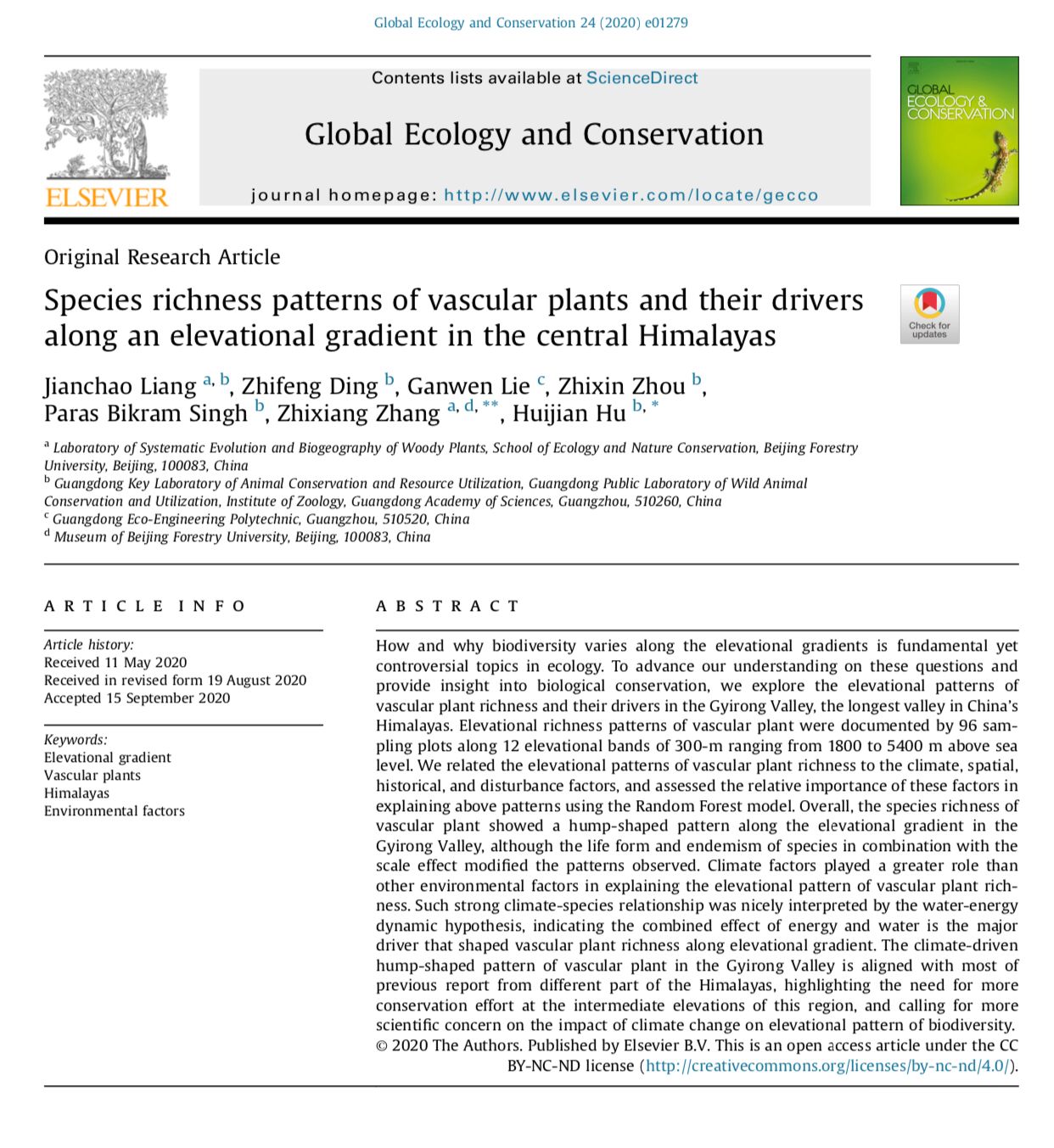
How and why biodiversity varies along the elevational gradients is fundamental yet
controversial topics in ecology. To advance our understanding on these questions and
provide insight into biological conservation, we explore the elevational patterns of
vascular plant richness and their drivers in the Gyirong Valley, the longest valley in China’s
Himalayas. Elevational richness patterns of vascular plant were documented by 96 sampling plots along 12 elevational bands of 300-m ranging from 1800 to 5400 m above sea
level. We related the elevational patterns of vascular plant richness to the climate, spatial,
historical, and disturbance factors, and assessed the relative importance of these factors in
explaining above patterns using the Random Forest model. Overall, the species richness of
vascular plant showed a hump-shaped pattern along the elevational gradient in the
Gyirong Valley, although the life form and endemism of species in combination with the
scale effect modified the patterns observed. Climate factors played a greater role than
other environmental factors in explaining the elevational pattern of vascular plant richness. Such strong climate-species relationship was nicely interpreted by the water-energy
dynamic hypothesis, indicating the combined effect of energy and water is the major
driver that shaped vascular plant richness along elevational gradient. The climate-driven
hump-shaped pattern of vascular plant in the Gyirong Valley is aligned with most of
previous report from different part of the Himalayas, highlighting the need for more
conservation effort at the intermediate elevations of this region, and calling for more
scientific concern on the impact of climate change on elevational pattern of biodiversity
© 2022 Biodiversity Conservation Society Nepal. All Rights Reserved.
Website by Brevin Creation